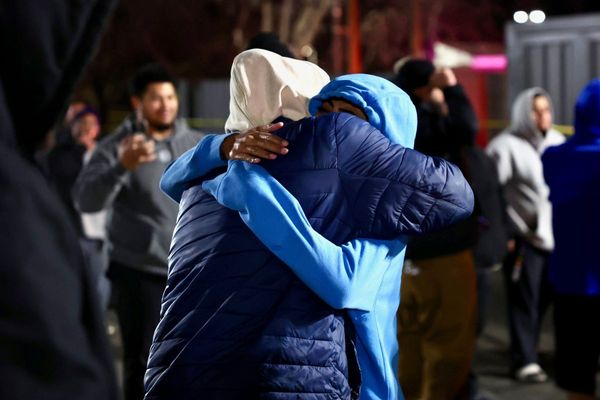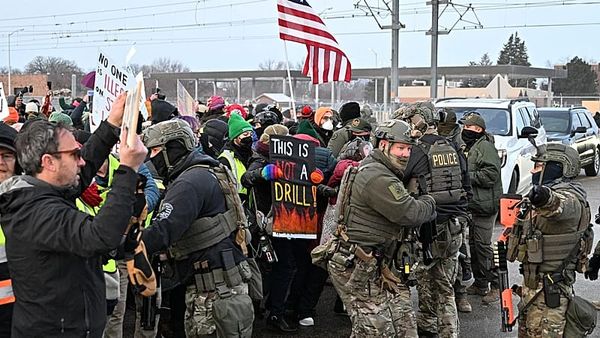
Where is the plant and how significant is it?
The Zaporizhzhia nuclear power plant is the largest in Europe and ninth largest in the world. It sits on the eastern bank of the Dnieper River, about 550km (340 miles) south-east of Kyiv.
It was built between 1984 and 1995, and modernised over the last two decades with the help of European Union funds released in the wake of the Chernobyl nuclear disaster. That programme meant to finish this year, but was disrupted by the Russian invasion.
The plant has six nuclear reactors, and when all of them are online it can produce 5.7 GW, enough to power roughly 4 million Ukrainian homes. Two are operating at the moment but it is still a vital part of Ukraine’s electric grid.
It has been in the news because of safety concerns after Russia troops took control of the area, stationed military vehicles inside turbine halls, and drew up a risky plan to disconnect it from Ukraine’s grid.
What has happened at the plant since the outbreak of war?
The Russian military took over the area in the early days of the war, although the plant is still run by Ukrainian workers.
Here are some key dates since the outbreak of war.
24 February: Russia invades Ukraine, two of six reactors shutdown.
27 February: Fighting first reported in vicinity of the plant.
4 March: Russia seizes the plant after a battle during which a fire breaks out in a training area. Footage of the battle is captured on a security camera:
There is global alarm at the prospect of fighting so close to nuclear reactors. Another reactor is shut down. Footage published the next day shows some of the damage:
A photograph published on 17 March showed damage to an administrative building at the site:

5 July: Report that Russia has deployed military equipment to the plant, turning it into a base. Footage of Russian vehicles and personnel at the plant emerges in the weeks that follow:

5 August: One of three remaining reactors online is shut down after shelling.
6 August: Alarm over strikes near storage area for radioactive materials.
24 August: Ukraine’s nuclear chief says Russia has a plan to disconnect the plant from the grid, and has filled the turbine halls of two reactors that are still operational with military vehicles:
25 August: The plant is temporarily disconnected from Ukraine’s national grid for first time in nearly 40 years of operation, after final power line connecting the plant to the grid is cut twice by fires at the ash pits of a nearby coal-fired power plan.

How has war affected the plant and its workers?
About 9,000 of a 11,000-strong workforce have chosen to stay on to keep the reactors operating safely, despite extremely difficult working conditions, including mass detentions and assaults.
One worker was beaten to death, another so badly assaulted he spent three months in hospital and about 200 workers have been detained, Petro Kotin, the head of Energoatom, told the Guardian.
They have chosen to stay on because without them the risks of some kind of accident that would affect not just the local area or Ukraine, but possibly many neighbouring countries, would be much higher.
Although the plant was originally built to Soviet designs, updates to the system means Russian engineers do not know how to run it safely, Kotin said.
What might happen next?
Ukraine has warned that Russia is contemplating disconnecting the plant from Ukraine’s national grid and connecting it to Russia’s power network.
This would be extremely dangerous, because the plant’s cooling systems rely on electricity to work, and if back up diesel generators fail the reactors could only operate safely for 90 minutes.
This may be the biggest danger, but Kotin warned that Russia’s management of the site is reckless. Military trucks block access to the turbine halls next to reactors, so if a blaze broke out firefighters might struggle to tackle it.
1/5 In early March, Russian ground forces assaulted and seized Zaporizhzhia Nuclear Power Plant (ZNPP). pic.twitter.com/TA6Ics2VkR
— Ministry of Defence 🇬🇧 (@DefenceHQ) August 25, 2022
And even if Russia does not attempt a switch, three out of four main power lines to the site are down, along with two out of three backups. On Thursday, the last remaining power line was disrupted twice, leading the plant to be cut off from the national grid for the first time since reactors began operation nearly 40 years ago.
All sides have called for a delegation from the UN nuclear watchdog, the International Atomic Energy Agency, to visit and inspect the site. Kotin said that could happen within one to two weeks, with all sides hammering out practical details.
World leaders have urged Russia not to attempt the switch between grids, and called on Moscow to remove military equipment and personnel from the site.







